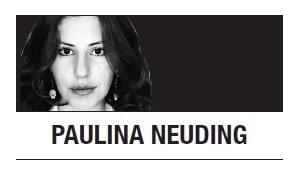
STOCKHOLM -- The international Christian organization Open Doors has reported that Christians at asylum centers in Germany -- the European country that has accepted the most migrants -- face “fear and panic,” owing to widespread harassment by other asylum-seekers.
Gay asylum-seekers are offered shelter at special homes in Germany, for their own protection.
In Sweden, which has taken in the second-highest number of asylum-seekers in Europe -- and the highest number per capita -- migration authorities may now establish safe zones for women at asylum centers, where Christians and gays have also reported harassment.
Discussions about the influx of migrants into Europe have tended to focus on logistics, such as how to provide enough beds for the 1.1 million asylum-seekers who arrived in Germany last year, or the more than 160,000 who arrived in Sweden. But, as the conflicts in asylum centers reveal, the challenge is far more complex than that.
Indeed, the refugee crisis in Europe is more a matter of culture than of numbers. And cultural clashes are much harder to address than logistics -- especially once they leave the regulated confines of the asylum center, which can mitigate potential conflicts with surveillance and design. How will individuals who cannot share a shelter with gays and Christians without harassing them be able to integrate into liberal European societies?
The German and Swedish governments have not placed a high priority on addressing this question. In fact, both have failed to take seriously the cultural differences -- on issues like women’s rights, minority rights, family honor, and individual liberties -- between asylum-seekers mainly from the Middle East and North Africa, and the European societies where they hope to live. In Sweden, in particular, a strong commitment to political correctness has severely limited public debate.
In ignoring these differences, the political elites in both Germany and Sweden are risking some of their countries’ most valuable social assets, including security, stability, equality, tolerance, and individual freedom. Yet they fail to note these risks. They act like their hard-won social advantages are inexhaustible natural resources, rather than the product of centuries of development -- a product that is far more fragile than is widely assumed.
Perhaps the most obvious example of the threat European societies faces occurred in Cologne, Germany, on New Year’s Eve, when more than 600 women were sexually assaulted -- and in some cases also robbed -- by large gangs of men, most of whom were illegal immigrants or asylum-seekers. Only four of the 153 suspects detained were German nationals.
Though mass sexual abuse is not unheard of in Europe, it has historically occurred only during conflicts -- for example, during the Balkan wars of the 1990s and in the areas occupied by the Soviet Red Army at the end of World War II. What happened in Cologne last December has no equivalent in peacetime Western Europe.
Nor were they a one-off event. Shortly after the news of the Cologne attacks broke, it was revealed that similar attacks had taken place at the We Are Stockholm youth festival in the Swedish capital two years in a row, with young refugee men encircling and sexually assaulting teenage girls. Police had to escort 200 male attendees from the festival area last year.
For Roger Ticoalu, who heads the Stockholm city government’s events department, and his colleagues, the assaults were utterly shocking. “When we got the first indications of what happened,” he explained, “we didn’t think it could be true.” And yet it was not just true; it was pervasive -- and it has continued in other contexts.
Over the last six months, reports of harassment at public bathhouses in Sweden have multiplied, with the same group approach employed repeatedly -- “a new phenomenon for us,” according to the director of a public pool in Ostersund, a city in Sweden’s north. In Bornheim, Germany, male asylum-seekers had to be banned temporarily from a local bathhouse in January, after complaints of sexual harassment.
In response to the mounting anecdotal evidence of sexual abuse, Swedish police undertook an analysis of all harassment that has been occurring in public spaces. Their findings confirm that there is a problem with immigrants acting in groups to attack women and girls.
In response to this so-called “culture clash,” Sweden has launched an initiative to educate young asylum-seekers about gender equality. Likewise, Germany created an informational website, offering advice on sex and sexuality, among other topics. Whether or not such initiatives ultimately have an impact, there is no denying that in Germany and Sweden -- two of the world’s most open, tolerant, and equitable societies -- women and girls now face a new reality.
German and Swedish authorities have already had to take measures to protect women in public spaces. At the beginning of the year, Stockholm’s largest public bathhouse introduced single-sex time slots for the whirlpool; shortly thereafter, police officers began patrolling the area. At this year’s We Are Stockholm festival, there will be both a larger police presence and widespread video surveillance.
Large numbers of police, together with safe zones for women, helped to protect against mass sexual assaults at the carnival festivities in Cologne in February. But, as the debate over refugees rages on, one must ask: Are “safe zones for women” Europe’s future?
By Paulina Neuding
Paulina Neuding, a cofounder of the Freedom Rights Project, is a columnist with the Swedish newspapers Svenska Dagbladet and Goteborgs-Posten. -- Ed.
(Project Syndicate)








![[Weekender] Korea's traditional sauce culture gains global recognition](http://res.heraldm.com/phpwas/restmb_idxmake.php?idx=644&simg=/content/image/2024/11/21/20241121050153_0.jpg)